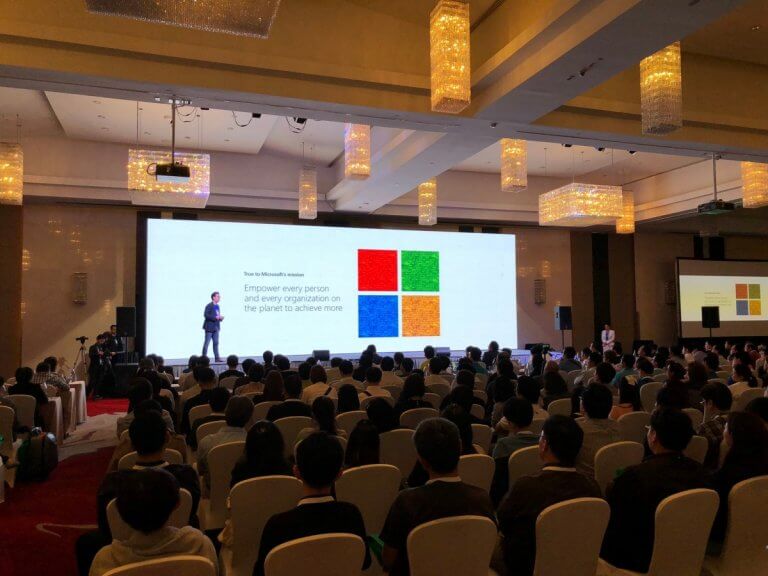
Connected to global partner Microsoft, as well as event partners such as the Ministry of Education Malaysia and the Department for International Trade, this year’s BETT Asia summit proved to be packed with revelations in the global education sector.
Hundreds of eagle-eyed educators and EdTech organisations toured the event, waiting to view the next best initiative or product that would heighten engagement in their respective learning environments.
A few of those curious onlookers were Study International journalists and here are four things they each found to cultivate global collaboration in education:
1. Schools with Smart Autogreen Systems
Extremely proud of these 11 and 12-year-olds at #BettAsia2019 exhibiting their Smart Autogreen System, which automates the caring of plants and fish by using … (drumroll) an app! This means you can feed fish and produce vegetables as long as you have Wi-fi #STEM pic.twitter.com/lSWBjVFJvr
— Lee Lian Kong (@leelian_kong) March 12, 2019
Schools that were integrating out-of-the-box gadgets and revolutionary apps became a running theme throughout talks and exhibition booths.
The Smart Autogreen System, constructed by K12 students, certainly stole the show with its inventive mechanisms and environmental motivation.
So much so, SI journalist Lee Lian decided to feature it on her twitter feed, “From their idealistic objectives (eg. eradicate hunger), to the technical skills that went into the project, this project wow-ed me from the get-go and still does.”
2. Student aspirations without restrictions
“We need to stop asking children what they want to be and instead ask them, who do they want to be.” – profound words by Prof Dr Ger Graus, Global Director of Education, Kidzania. pic.twitter.com/7LQsHe4QMU
— Sharuna Segaren (@sharuna87) March 12, 2019
For Sharuna, the talk by Professor Graus was very interesting because it made her think about how children can only aspire to what they know exists.
“Many of my peers who grew up in similar Asian households thought they could only become an accountant, lawyer, or doctor. I’m grateful to my parents who taught me to follow my passion and that I could be whatever I want, which is what led be to follow my heart and become a writer. Children need to know there’s a huge world out there for them to explore so they can have bigger aspirations,” said Sharuna.
3. Schools with the spirit of innovation
How can you develop a culture of innovation spirit in schools? Staci Kalmbacher says Dulwich College offers a grant to their school teachers to develop pedagogy or learning environments that utilise new technologies to facilitate student success. #BettAsia2019 pic.twitter.com/46YdMiPXTJ
— Yasmin Ahmad Kamil (@yasmin_aky) March 13, 2019
At BETT Asia, Yasmin discovered that schools are in search of innovative tools to establish creative and conducive learning environments.
“Innovation in schools is important because I don’t think our current education systems are preparing students for a future they’ll soon be walking into, and for jobs that may not exist yet. Educators need to take action before it’s too late, and I think you can only do this by promoting a conducive environment that fosters creativity in changing how and what students are taught,” she explained.
4. Student learning without concrete barriers
Glenn from @GreenSchoolBali takes the stage at #BETTASIA2019 to inspire the green leaders of tomorrow pic.twitter.com/ICZaUHM9q9
— Emily Devonald (@emdevonald) March 13, 2019
Forget the traditional school format of concrete walls and endless rows of desks; the Green School in Bali is breaking down outdated structures and teaching learners in classrooms without barriers.
In a structure made of bamboo, nature becomes their classroom – an inspirational setting for learners’ creativity to grow and their respect for the natural environment to flourish.
That’s what Emily found insightful about the Green School talk at the BETT Asia event, “I questioned myself as to why schools are still stuck in the past,” she said. “It’s true, we should be encouraging students to explore outside of classroom environments and be present in the real-world – otherwise they’re just learning in a confined mirage.”







